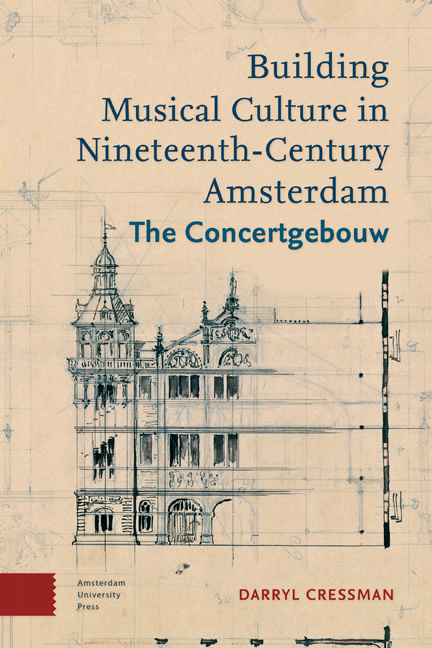Book contents
- Frontmatter
- Contents
- List of Illustrations
- Acknowledgements
- Dedication
- 1 The Concert Hall as a Medium of Musical Culture
- 2 Listening, Attentive Listening, and Musical Meaning
- 3 Patronage, Class, and Buildings for Music: Aristocratic Opera Houses and Bourgeois Concert Halls
- 4 Acoustic Architecture before Science : Designing the Sound of the Concertgebouw
- 5 Frisia Non Cantat: The Unmusicality of the Dutch
- 6 Listening to Media History
- Works Cited
- Index of Names
- Index of Subjects
3 - Patronage, Class, and Buildings for Music: Aristocratic Opera Houses and Bourgeois Concert Halls
Published online by Cambridge University Press: 10 December 2020
- Frontmatter
- Contents
- List of Illustrations
- Acknowledgements
- Dedication
- 1 The Concert Hall as a Medium of Musical Culture
- 2 Listening, Attentive Listening, and Musical Meaning
- 3 Patronage, Class, and Buildings for Music: Aristocratic Opera Houses and Bourgeois Concert Halls
- 4 Acoustic Architecture before Science : Designing the Sound of the Concertgebouw
- 5 Frisia Non Cantat: The Unmusicality of the Dutch
- 6 Listening to Media History
- Works Cited
- Index of Names
- Index of Subjects
Summary
The custom of decking out concert halls with temple facades became a matter of course in the nineteenth century, so that ultimately the claims advanced by this architectural symbolism on behalf of the symphony and the bourgeois concert no longer appeared as strange and haughty as they in fact were. In an architectonic system that allowed museums to be Egyptianesque, theatres Greek, and churches Gothic […] concert-house architecture expressed a ‘religion of art’ in which Christian images shaded into imitations of antiquity.
The Concertgebouw in the Making
Approaching the Concertgebouw through the lens of technology studies means empirically tracing how it is that this building came into being. From the mid-nineteenth century onward, a musical public sphere was growing in Amsterdam. Discussions and debates about orchestral music, both in print and in conversations, were framed around a set of norms concerning audience behaviour, recognition of the Classic-Romantic canon, and the performance of these canonic works. Musical Romanticism was certainly ‘in the air’, but to endure and have efficacy, the ideas that had influenced criticism, conversations, and concert programming had to be translated into something more durable—a new concert hall. To convince Amsterdammers that a new concert hall was needed for their city it was necessary to develop a sociotechnical, or material, perspective towards the city's musical culture. The benefit of this perspective was that it enabled cultural reformers to focus their aspirational efforts towards the media of music's performance and reception, marking a material turn in the history of Amsterdam's musical culture that was the beginning of a serious musical culture that endures to this day.
In this chapter I trace how the desire to establish a classical music tradition in Amsterdam was articulated through a perspective that sought to convince Amsterdammers that musical culture is intertwined with buildings for music. My starting point will be an article that appeared in an Amsterdam newspaper in 1881 that proposed an architectural solution to the city's classical musical shortcomings.
- Type
- Chapter
- Information
- Building Musical Culture in Nineteenth-Century AmsterdamThe Concertgebouw, pp. 49 - 78Publisher: Amsterdam University PressPrint publication year: 2016



